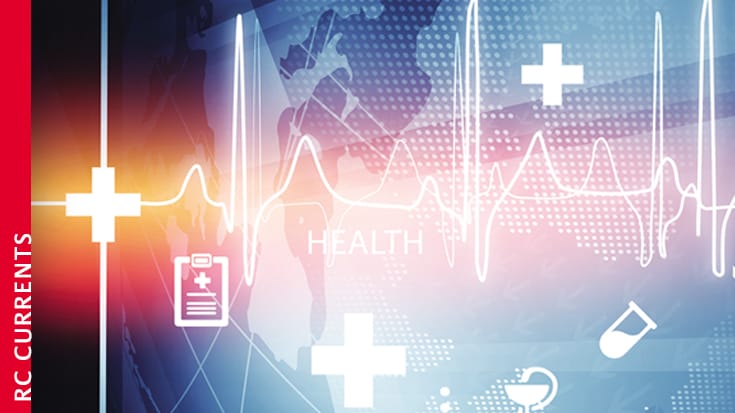
This is Who is Likely to Die
Canadian researchers believe measuring viral RNA in the blood can reliably predict which COVID-19 patients are most likely to die from the disease.
The investigators reached that conclusion after analyzing blood samples taken 11 days following the onset of symptoms in 279 patients hospitalized with moderate to severe COVID-19. In addition to measuring viral RNA, the researchers looked at inflammatory proteins to see if any stood out from the crowd and measured COVID-19 antibodies. Patients were monitored for the next 60 days.
The study showed that the amount of viral RNA was directly associated with mortality and was the best predictor of death after the findings were adjusted to take the age and sex of the participants into account. Including other biomarkers did not improve the predictive ability of viral RNA. The model worked just as well on infected patients from two hospitals treated in the first wave of the pandemic and the second and third waves.
The researchers believe more study is in order. “It would be interesting to use the model to monitor patients, with the following question in mind: when you administer new treatments that have proven effective, is viral load still a predictive marker of mortality?” asked author Dr. Daniel Kaufmann, from the University of Montreal.
The study appeared in Science Advances.
ATS Releases FeNO Guideline
The American Thoracic Society has released a new clinical practice guideline on the use of fractional exhaled nitric oxide (FeNO) testing in asthma. The authors used the evidence-based Grading of Recommendations, Assessment, Development and Evaluation (GRADE) framework to arrive at the following recommendation –
In patients with asthma in whom treatment is being considered, we suggest the use of FeNO in addition to usual care over usual care alone (conditional recommendation, low confidence in estimates of effect).
“The studies being evaluated as well as the interpretation of results via our methodology suggest that any patient with asthma may be eligible for the measurement of FeNO in decision making regarding therapy,” wrote guideline co-chairs Sumita B. Khatri, MD, MA, and Teal S. Hallstrand, MD, MPH.
However, they go on to stress that the guideline does not address the question of whether FENO should be used to establish a diagnosis of asthma or whether it has a role to play in monitoring the condition. Instead, they call for those issues to be assessed systematically.
The guideline was published by the American Journal of Respiratory and Critical Care Medicine.
A New and Better Mask
Since the pandemic began, respiratory therapists and their fellow clinicians have been doing the best they can to communicate with their patients through a face mask. However, researchers from Brigham and Women’s Hospital and the Massachusetts Institute of Technology believe there is a better way.
They developed a transparent face mask that got good reviews from clinicians and patients alike in a study published by JAMA Network Open. Overall, 91% of the health care workers surveyed by the research team felt that the transparent mask would facilitate communication. In addition, about two-thirds of the study’s 123 general health care workers said they would feel positive about wearing a transparent mask. The same was true for 82% of the 45 deaf or hard-of-hearing health care workers also included in the research.
In a survey that included 1,000 adults in the general population, 45% said they would feel positive about wearing a transparent face mask, and another 36.6% were neutral on the issue.
“Transparent masks have the potential to address or overcome barriers of communication, especially within health care settings,” said corresponding author Giovanni Traverso, MB, BChir, PhD, of the Brigham’s Division of Gastroenterology and the Department of Mechanical Engineering at MIT. “It’s a simple message, but it’s important. Patient interactions are critical, and there are measures we can take to improve them.”
Social, Behavioral, Economic Factors Predict Hospital Readmissions
Reducing readmissions has been on the hospital administrator’s radar screen since the federal government introduced the Hospital Readmissions Reduction Program (HRRP) back in 2012. Identifying those patients most likely to be readmitted has been key to the effort
Researchers from the University of Buffalo who analyzed data on more than 19.2 million hospital admissions and 3.6 million readmissions have come up with some answers. Their study found –
- Female gender, higher household income, and treatment at a rural hospital were associated with decreased odds of 30-day readmission for the conditions targeted by the HRRP (heart failure, pneumonia, acute myocardial infarction, and acute exacerbation of chronic obstructive pulmonary disease, or AECOPD).
- Patients aged 75-90 accounted for the highest percentage of readmissions, except for those treated for AECOPD, where patients aged 40-64 had the highest readmission rates.
The authors believe these findings suggest initiatives to reduce readmissions should focus more strongly on the social, behavioral, and economic factors related to a patient’s health outcomes.
The study was published by BMC Public Health.
Suffering from a Lack of Sleep?
If you’ve suffered the ill effects of poor sleep during the pandemic, you aren’t alone. A recent study out of Columbia University finds poor sleep is taking its toll on health care workers.
The study builds on research published in August that reported the results of a survey taken among health care workers during the first wave of the virus. The investigators found that more than 70% reported at least moderate insomnia during the peak. While that percentage declined as the first wave eased up, four in 10 still had insomnia 10 weeks later.
The new study looked at how these sleep issues might be related to psychological problems, with results suggesting those experiencing poor sleep were twice as likely to report symptoms of depression. In addition, they were 50% more likely to report psychological distress and 70% more likely to report anxiety symptoms.
The authors note sleep is essential for mental health, and while their surveys can’t say for sure whether the sleep problems they saw caused the psychological distress or the psychological distress caused the sleep problems, one thing is certain. Health care workers need their sleep, particularly during a trying time like the pandemic.
The latest study was published by the Journal of Affective Disorders.
Email newsroom@aarc.org with questions or comments, we’d love to hear from you.












